Nobel Prize winners in Chemistry since 1901 and upto till date
The Nobel Prize in Chemistry is awarded annually by the Royal Swedish Academy of Sciences to scientists who have made outstanding contributions to the field of chemistry. It has been awarded since 1901 and recognizes discoveries that have deepened our understanding of chemical processes and advanced science and technology.
Key Aspects of the Prize
It covers areas like organic chemistry, biochemistry, physical chemistry, and materials science.
Some discoveries have led to life-saving medicines, new materials, and environmental solutions.
Many Chemistry Nobel Prizes are related to medicine, biology, and physics, showing the connections between scientific fields.
Famous Nobel Prize Winners in Chemistry
Marie Curie (1911) – Discovery of radium and polonium, work on radioactivity.
Linus Pauling (1954) – Research on the nature of chemical bonds.
Dorothy Crowfoot Hodgkin (1964) – X-ray crystallography of biomolecules, including vitamin B12 and penicillin.
Ahmed Zewail (1999) – Development of femtochemistry (study of chemical reactions on extremely short timescales).
Richard F. Heck, Ei-ichi Negishi, Akira Suzuki (2010) – Development of palladium-catalyzed cross-coupling in organic synthesis.
Frances H. Arnold (2018) – Directed evolution of enzymes for bioengineering applications.
Emmanuelle Charpentier, Jennifer Doudna (2020) – Development of CRISPR-Cas9 gene-editing technology.
K. Barry Sharpless (2001 & 2022) – Pioneering work in click chemistry; one of the few to win twice in Chemistry.
Let's see the list of all Nobel Laureates in Chemistry
|
Year |
Laureate(s) |
Contribution |
|
1901 |
Jacobus Henricus van 't Hoff |
for his discovery of the laws of chemical dynamics and osmotic pressure in solutions |
|
1902 |
Hermann Emil Fischer |
for his work on sugar and purine syntheses |
|
1903 |
Svante Arrhenius |
for his electrolytic theory of dissociation |
|
1904 |
William Ramsay |
for his discovery of the inert gaseous elements in air, and his determination of their place in the periodic system |
|
1905 |
Adolf von Baeyer |
for his services in the advancement of organic chemistry and the chemical industry, through his work on organic dyes and hydroaromatic compounds |
|
1906 |
Henri Moissan |
for his investigation and isolation of the element fluorine, and for the electric furnace called after him |
|
1907 |
Eduard Buchner |
for his biochemical research and his discovery of cell-free fermentation |
|
1908 |
Ernest Rutherford |
for his investigations into the disintegration of the elements, and the chemistry of radioactive substances |
|
1909 |
Wilhelm Ostwald |
for his work on catalysis and for his investigations into chemical equilibria and reaction velocities |
|
1910 |
Otto Wallach |
for his work in the field of alicyclic compounds |
|
1911 |
Marie Curie |
for her services to the advancement of chemistry by the discovery of the elements radium and polonium, by the isolation of radium, and the study of the nature and compounds of this remarkable element |
|
1912 |
Victor Grignard |
for the discovery of the so-called Grignard reagent, which in recent years has greatly advanced organic chemistry |
|
1912 |
Paul Sabatier |
for his method of hydrogenating organic compounds in the presence of finely divided metals, whereby the progress of organic chemistry has been greatly advanced in recent years |
|
1913 |
Alfred Werner |
for his work on the linkage of atoms in molecules, particularly in inorganic chemistry |
|
1914 |
Theodore William Richards |
for his accurate determinations of the atomic weights of a large number of chemical elements |
|
1915 |
Richard Willstätter |
for his researches on plant pigments, especially chlorophyll |
|
1916 |
Not awarded |
- |
|
1917 |
Not awarded |
- |
|
1918 |
Fritz Haber |
for the synthesis of ammonia from its elements |
|
1919 |
Not awarded |
- |
|
1920 |
Walther Hermann Nernst |
for his work in thermochemistry |
|
1921 |
Frederick Soddy |
for his contributions to our knowledge of the chemistry of radioactive substances, and his investigations into the origin and nature of isotopes |
|
1922 |
Francis W. Aston |
Discovery of isotopes in non-radioactive elements and enunciation of the whole-number rule |
|
1923 |
Fritz Pregl |
Invention of the method of micro-analysis of organic substances |
|
1924 |
No Prize Awarded |
Prize money allocated to the Special Fund |
|
1925 |
Richard Zsigmondy |
Demonstration of the heterogeneous nature of colloid solutions and fundamental methods in colloid chemistry |
|
1926 |
The Svedberg |
Work on disperse systems |
|
1927 |
Heinrich Wieland |
Investigations on the constitution of bile acids and related substances |
|
1928 |
Adolf Windaus |
Research on sterols and their connection with vitamins |
|
1929 |
Arthur Harden, Hans von Euler-Chelpin |
Investigations on sugar fermentation and fermentative enzymes |
|
1930 |
Hans Fischer |
for his research on hemin and chlorophyll and especially for his synthesis of hemin |
|
1931 |
Carl Bosch, Friedrich Bergius |
for their contributions to high-pressure chemistry |
|
1932 |
Irving Langmuir |
for his discoveries and investigations in surface chemistry |
|
1933 |
Not awarded |
- |
|
1934 |
Harold Clayton Urey |
for his discovery of heavy hydrogen (deuterium) |
|
1935 |
Frédéric Joliot-Curie, Irène Joliot-Curie |
for their synthesis of new radioactive elements |
|
1936 |
Petrus (Peter) Debye |
for his contributions to molecular structure determination through dipole moments and X-ray and electron diffraction analysis |
|
1937 |
Walter Norman Haworth |
for his investigations on carbohydrates and vitamin C |
|
1937 |
Paul Karrer |
for his investigations on carotenoids, flavins, and vitamins A and B2 |
|
1938 |
Richard Kuhn |
for his work on carotenoids and vitamins (refused award) |
|
1939 |
Adolf Butenandt |
for his work on sex hormones (refused award) |
|
1939 |
Leopold Ružicka |
for his work on polymethylenes and higher terpenes |
|
1940 |
Not awarded |
- |
|
1941 |
Not awarded |
- |
|
1942 |
Not awarded |
- |
|
1943 |
George de Hevesy |
for his work on the use of isotopes as tracers in the study of chemical processes |
|
1944 |
Otto Hahn |
for his discovery of the fission of heavy nuclei |
|
1945 |
Artturi Ilmari Virtanen |
for his research and inventions in agricultural and nutrition chemistry, especially for his fodder preservation method |
|
1946 |
James B. Sumner |
for his discovery that enzymes can be crystallized |
|
1946 |
John Howard Northrop, Wendell Meredith Stanley |
for their preparation of enzymes and virus proteins in a pure form |
|
1947 |
Sir Robert Robinson |
for his investigations on plant products of biological importance, especially the alkaloids |
|
1948 |
Arne Tiselius |
for his research on electrophoresis and adsorption analysis, especially for his discoveries concerning the complex nature of serum proteins |
|
1949 |
William Giauque |
for his contributions in the field of chemical thermodynamics, particularly concerning the behavior of substances at extremely low temperatures |
|
1950 |
Otto Diels, Kurt Alder |
for their discovery and development of the diene synthesis |
|
1951 |
Edwin McMillan, Glenn T. Seaborg |
for their discoveries in the chemistry of the transuranium elements |
|
1952 |
Archer John Porter Martin, Richard Laurence Millington Synge |
for their invention of partition chromatography |
|
1953 |
Hermann Staudinger |
for his discoveries in the field of macromolecular chemistry |
|
1954 |
Linus Pauling |
for his research into the nature of the chemical bond and its application to the elucidation of the structure of complex substances |
|
1955 |
Vincent du Vigneaud |
for his work on biochemically important sulfur compounds, especially for the first synthesis of a polypeptide hormone |
|
1956 |
Cyril Norman Hinshelwood, Nikolay Semenov |
for their researches into the mechanism of chemical reactions |
|
1957 |
Lord Alexander R. Todd |
for his work on nucleotides and nucleotide co-enzymes |
|
1958 |
Frederick Sanger |
for his work on the structure of proteins, especially that of insulin |
|
1959 |
Jaroslav Heyrovský |
for his discovery and development of the polarographic methods of analysis |
|
1960 |
Willard Libby |
for his method of using carbon-14 for age determination in archaeology, geology, geophysics, and other branches of science |
|
1961 |
Melvin Calvin |
for his research on the carbon dioxide assimilation in plants |
|
1962 |
Max Perutz, John Kendrew |
for their studies of the structures of globular proteins |
|
1963 |
Karl Ziegler, Giulio Natta |
for their discoveries in the field of the chemistry and technology of high polymers |
|
1964 |
Dorothy Crowfoot Hodgkin |
for her determinations by X-ray techniques of the structures of important biochemical substances |
|
1965 |
Robert Burns Woodward |
for his outstanding achievements in the art of organic synthesis |
|
1966 |
Robert S. Mulliken |
for his fundamental work concerning chemical bonds and the electronic structure of molecules by the molecular orbital method |
|
1967 |
Manfred Eigen, Ronald Norrish, George Porter |
for their studies of extremely fast chemical reactions, effected by disturbing the equilibrium by very short pulses of energy |
|
1968 |
Lars Onsager |
for the discovery of the reciprocal relations bearing his name, which are fundamental for the thermodynamics of irreversible processes |
|
1969 |
Derek Barton, Odd Hassel |
for their contributions to the development of the concept of conformation and its application in chemistry |
|
1970 |
Luis Federico Leloir |
for his discovery of sugar nucleotides and their role in the biosynthesis of carbohydrates |
|
1971 |
Gerhard Herzberg |
for his contributions to the knowledge of electronic structure and geometry of molecules, particularly free radicals |
|
1972 |
Christian B. Anfinsen |
for his work on ribonuclease, especially concerning the connection between amino acid sequence and biologically active conformation |
|
1972 |
Stanford Moore, William H. Stein |
for their contribution to the understanding of the connection between chemical structure and catalytic activity of the active center of ribonuclease |
|
1973 |
Ernst Otto Fischer, Geoffrey Wilkinson |
for their pioneering work on the chemistry of the organometallic sandwich compounds |
|
1974 |
Paul J. Flory |
for his fundamental achievements in the physical chemistry of macromolecules |
|
1975 |
John Cornforth |
for his work on the stereochemistry of enzyme-catalyzed reactions |
|
1975 |
Vladimir Prelog |
for his research into the stereochemistry of organic molecules and reactions |
|
1976 |
William N. Lipscomb |
for his studies on the structure of boranes illuminating problems of chemical bonding |
|
1977 |
Ilya Prigogine |
for his contributions to non-equilibrium thermodynamics, particularly the theory of dissipative structures |
|
1978 |
Peter D. Mitchell |
for his contribution to the understanding of biological energy transfer through the formulation of the chemiosmotic theory |
|
1979 |
Herbert C. Brown, Georg Wittig |
for their development of the use of boron- and phosphorus-containing compounds in important reagents in organic synthesis |
|
1980 |
Paul Berg |
for studies on the biochemistry of nucleic acids, particularly recombinant DNA |
|
1980 |
Walter Gilbert, Frederick Sanger |
for their contributions to determining base sequences in nucleic acids |
|
1981 |
Kenichi Fukui, Roald Hoffmann |
for their theories on the course of chemical reactions |
|
1982 |
Aaron Klug |
for his development of crystallographic electron microscopy |
|
1983 |
Henry Taube |
for his work on the mechanisms of electron transfer reactions |
|
1984 |
Bruce Merrifield |
for his development of methodology for chemical synthesis on a solid matrix |
|
1985 |
Herbert A. Hauptman, Jerome Karle |
for their development of direct methods for the determination of crystal structures |
|
1986 |
Dudley R. Herschbach, Yuan T. Lee, John C. Polanyi |
for their contributions concerning the dynamics of chemical elementary processes |
|
1987 |
Donald J. Cram, Jean-Marie Lehn, Charles J. Pedersen |
for their development and use of molecules with structure-specific interactions of high selectivity |
|
1988 |
Johann Deisenhofer, Robert Huber, Hartmut Michel |
for the determination of the three-dimensional structure of a photosynthetic reaction centre |
|
1989 |
Sidney Altman, Thomas R. Cech |
for their discovery of catalytic properties of RNA |
|
1990 |
Elias James Corey |
for his development of the theory and methodology of organic synthesis |
|
1991 |
Richard R. Ernst |
for his contributions to high-resolution nuclear magnetic resonance (NMR) spectroscopy |
|
1992 |
Rudolph A. Marcus |
for his contributions to the theory of electron transfer reactions |
|
1993 |
Kary B. Mullis |
for his invention of the polymerase chain reaction (PCR) method |
|
1993 |
Michael Smith |
for his contributions to site-directed mutagenesis and its development for protein studies |
|
1994 |
George A. Olah |
for his contribution to carbocation chemistry |
|
1995 |
Paul J. Crutzen, Mario J. Molina, F. Sherwood Rowland |
for their work in atmospheric chemistry, particularly concerning ozone |
|
1996 |
Robert F. Curl Jr., Sir Harold Kroto, Richard E. Smalley |
for their discovery of fullerenes |
|
1997 |
Paul D. Boyer, John E. Walker |
for their elucidation of the enzymatic mechanism underlying ATP synthesis |
|
1997 |
Jens C. Skou |
for the first discovery of an ion-transporting enzyme, Na+, K+ -ATPase |
|
1998 |
Walter Kohn |
for his development of the density-functional theory |
|
1998 |
John Pople |
for his development of computational methods in quantum chemistry |
|
1999 |
Ahmed Zewail |
for his studies of the transition states of chemical reactions using femtosecond spectroscopy |
|
2000 |
Alan Heeger, Alan MacDiarmid, Hideki Shirakawa |
for the discovery and development of conductive polymers |
|
2001 |
William Knowles, Ryoji Noyori |
for their work on chirally catalysed hydrogenation reactions |
|
2001 |
K. Barry Sharpless |
for his work on chirally catalysed oxidation reactions |
|
2002 |
John B. Fenn, Koichi Tanaka |
for their development of soft desorption ionisation methods for mass spectrometric analyses of biological macromolecules |
|
2002 |
Kurt Wüthrich |
for his development of NMR spectroscopy for determining the structure of biological macromolecules |
|
2003 |
Peter Agre |
for the discovery of water channels |
|
2003 |
Roderick MacKinnon |
for structural and mechanistic studies of ion channels |
|
2004 |
Aaron Ciechanover, Avram Hershko, Irwin Rose |
for the discovery of ubiquitin-mediated protein degradation |
|
2005 |
Yves Chauvin, Robert H. Grubbs, Richard R. Schrock |
for the development of the metathesis method in organic synthesis |
|
2006 |
Roger D. Kornberg |
for his studies of the molecular basis of eukaryotic transcription |
|
2007 |
Gerhard Ertl |
for his studies of chemical processes on solid surfaces |
|
2008 |
Osamu Shimomura, Martin Chalfie, Roger Y. Tsien |
for the discovery and development of the green fluorescent protein, GFP |
|
2009 |
Venkatraman Ramakrishnan, Thomas A. Steitz, Ada E. Yonath |
for studies of the structure and function of the ribosome |
|
2010 |
Richard F. Heck, Ei-ichi Negishi, Akira Suzuki |
for palladium-catalyzed cross couplings in organic synthesis |
|
2011 |
Dan Shechtman |
for the discovery of quasicrystals |
|
2012 |
Robert J. Lefkowitz, Brian Kobilka |
for studies of G-protein-coupled receptors |
|
2013 |
Martin Karplus, Michael Levitt, Arieh Warshel |
for the development of multiscale models for complex chemical systems |
|
2014 |
Eric Betzig, Stefan W. Hell, William E. Moerner |
for the development of super-resolved fluorescence microscopy |
|
2015 |
Tomas Lindahl, Paul Modrich, Aziz Sancar |
for mechanistic studies of DNA repair |
|
2016 |
Jean-Pierre Sauvage, Sir J. Fraser Stoddart, Bernard L. Feringa |
for the design and synthesis of molecular machines |
|
2017 |
Jacques Dubochet, Joachim Frank, Richard Henderson |
for developing cryo-electron microscopy for high-resolution structure determination of biomolecules in solution |
|
2018 |
Frances H. Arnold |
for the directed evolution of enzymes |
|
2018 |
George P. Smith, Sir Gregory P. Winter |
for the phage display of peptides and antibodies |
|
2019 |
John B. Goodenough, M. Stanley Whittingham, Akira Yoshino |
for the development of lithium-ion batteries |
|
2020 |
Emmanuelle Charpentier, Jennifer A. Doudna |
for the development of a method for genome editing |
|
2021 |
Benjamin List, David W.C. MacMillan |
for the development of asymmetric organocatalysis |
|
2022 |
Carolyn Bertozzi, Morten Meldal, K. Barry Sharpless |
for the development of click chemistry and bioorthogonal chemistry |
|
2023 |
Moungi Bawendi, Louis Brus, Aleksey Yekimov |
for the discovery and synthesis of quantum dots |
|
2024 |
David Baker |
for computational protein design |
|
2024 |
Demis Hassabis, John Jumper |
for protein structure prediction |
All are included in the text as hyperlink
Read other posts of this website




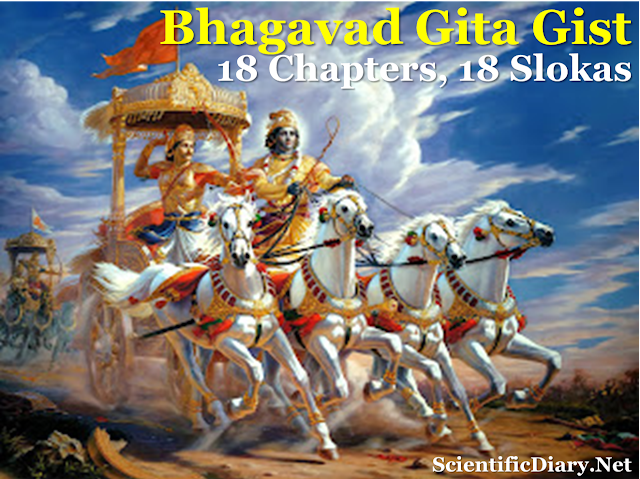
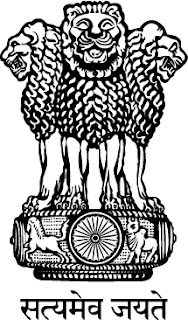
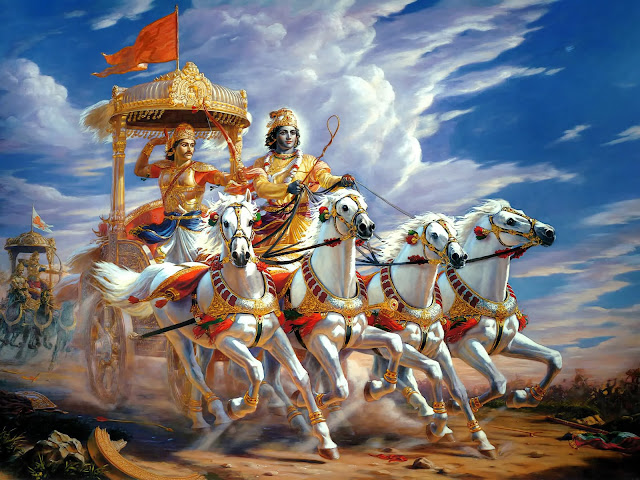
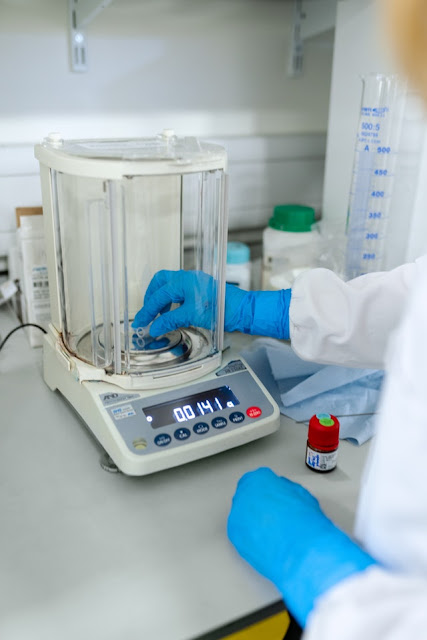

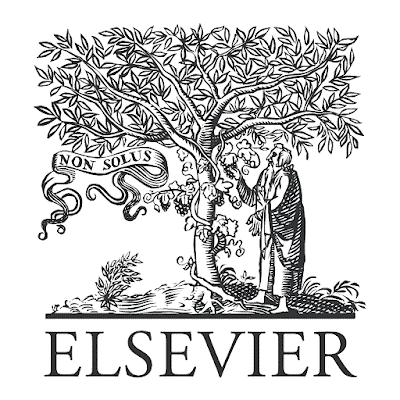



Comments
Post a Comment